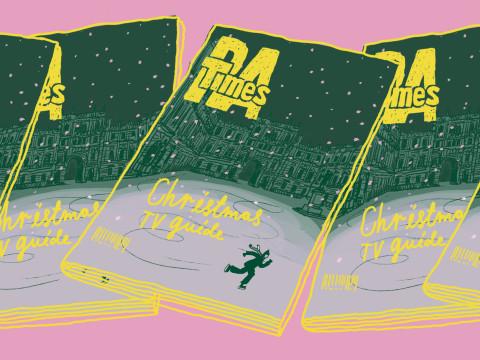
Ruth Asawa: the pioneering American sculptor you need to know
By Imogen Greenhalgh
Published on 26 February 2021
This International Women’s Day, we celebrate an artist once dismissed as a “San Francisco Housewife” who refused to see parenthood as an obstacle.
Imogen Greenhalgh is Deputy Editor of RA Magazine
The American sculptor Ruth Asawa described her philosophy about art in simple terms. In a video recording on the website run by her estate, she suggests an artist’s relationship with their materials is like that of parent and child: “You become the background, just like the parent allows the child to express himself.”
It’s a telling analogy, for family life for Asawa was inseparable from her art. She made her sculpture – most famously, her sinuous, looped wire forms – in her home, her six children assisting her where they could. Photographs of the family taken by Imogen Cunningham, who was a close friend, show Asawa immersed in her work as the children potter around her. She eschewed art residencies and commercial commissions that would disrupt domestic life, choosing instead to take on projects in her home city of San Francisco.

To understand how her roles as a mother, partner (she was once dismissed by a critic as “a San Francisco housewife”) and neighbour shaped her as an artist, it is helpful to know a little of her life. She was the daughter of two farmers who had emigrated to California from Japan, and from infancy, she worked in the fields – the repetitive act of stringing beans one of her primary duties – alongside school and Japanese classes. Her talent for art was apparent, and when, in 1942, the family was interned alongside around 110,000 fellow Japanese-Americans living on the West Coast, she was allowed to devote herself to studying drawing, relishing the tutelage of three animators from Walt Disney Animation Studios imprisoned in the same camp.
She made her sculpture – most famously, her sinuous, looped wire forms – in her home, her six children assisting her where they could.
Teaching college followed, but on discovering that her mixed ethnicity would obstruct her finding employment, she moved to Black Mountain College, an experimental, cash-strapped college in Asheville, North Carolina, where art, craft, music and dance elided in the teachers’ modernist pursuits. Asawa’s studies here were the making of her, and she thrived under the watchful eye of Josef Albers, as well as that of inventor Buckminster Fuller, who described her as the "most gifted, productive, and originally inspired artist" he had ever known.
In Asheville, she was also to meet Albert Lanier, a fellow student and budding architect, whom she went on to marry. On graduating, the pair moved to San Francisco in 1949, where interracial marriage had just become legal, and motherhood became, for the sculptor, part and parcel of her existence, despite cautions from Albers and Cunningham that parenthood could impede her artistic pursuits.

Between 1950 and 1959, she and Lanier had six children (five of whom remained within walking distance from their parents’ home for the rest of their life) and in the family house her sculptures were seen throughout the living spaces, hung in groups, an ongoing template for their display.
Though abstract, her multiplying forms prompt thoughts about the natural world, each bulbous shape and figure of eight recalling rounded bellies and ripened seedpods. Even their fabrication suggests fecundity, with Asawa devising a method in which generative e-shaped loops could repeat ad infinitum in order for her forms to grow.
Though abstract, her multiplying forms prompt thoughts about the natural world, each bulbous shape and figure of eight recalling rounded bellies and ripened seedpods
For Asawa’s children, life was hands-on, recalling their mother’s own childhood carrying out duties on the farm. During the summers, the family would join a rural community in Sonoma County, where their projects included handmaking from local redwood a pair of doors for their San Francisco home. On the surface of the wood, Asawa drew an undulating wave pattern which the children helped to carve and burnish – her five-year-old son Adam, passionate about bees, even introducing holes to draw the insects in (Ruth Asawa, Sculptor, at her Door, 1963; pictured above).
Notably, nothing of Asawa’s close-knit set-up was insular. Instead, family life was a gratifying way of living and working that could be replicated beyond the home, and both she and Lanier were resolutely civic-minded, working on numerous projects to improve San Francisco’s public spaces. In completing these, Asawa would often encourage children to help, turning art-making from a solitary into a social act. She is also remembered for her successful campaigning to bring the teaching of art into the district’s curriculum, guided by the expertise of professional artists. In her remaking of the domestic sphere, Asawa fashioned something outward-facing and continuous, extending and unfurling just like one of her wire forms.
From the Summer 2020 issue of RA Magazine, issued quarterly to Friends of the RA. Ruth Asawa: Citizen of the Universe was due to run from 12 Feb–9 May at Modern Art Oxford but has been postponed due to coronavirus.

Enjoyed this article?
As well as free entry to all of our exhibitions, Friends of the RA enjoy one of Britain’s most respected art magazines, delivered directly to your door. Why not join the club?
Related articles

Art telly to watch this Christmas
11 December 2024

A love letter to the gallery gift shop
18 November 2024

Painting the town: Florence in 1504
15 November 2024